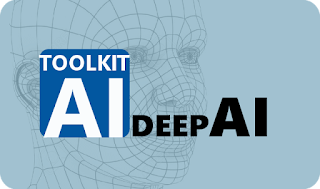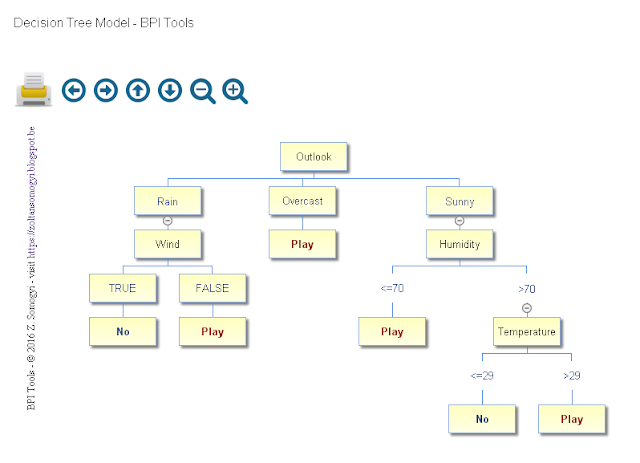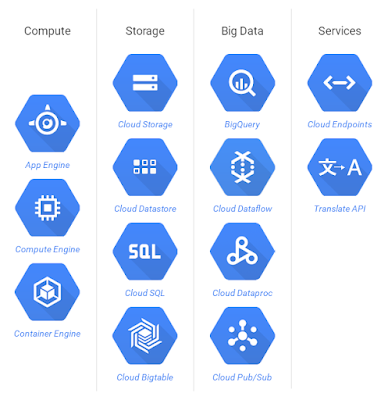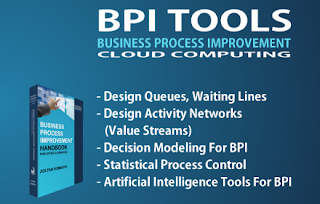The main aim of this case study is to demonstrate the different applications of Artificial Intelligence (machine learning) in business process improvement specific to the Healthcare sector. However, many of the principles and ideas applied in this case study are also applicable in many other sectors!
In case you would like to try the in this case study modeled AI or you would like to apply the principles learned from this case study in your own project then you can do so by using the free
Decision AI Google Sheets Add-on (part of the BPI Tools package; used in the Post-Operative Patient Care Process case). The Decision AI Google Sheets Add-on is developed in cooperation with Google.
For the second case study (Breast Cancer Diagnosis Process) you need the
AI-TOOLKIT software package which is a MS Windows high performance and extended desktop version of the Decision AI Google Sheets Add-on. The AI-TOOLKIT can handle a lot of data, it is much faster than the Google Sheets Add-on, it has no AI training time limit, it has automatic model parameters detection and it has more AI modeling options (which are e.g. needed for the second case).
Case 1: Post-Operative Patient Care Process
Introduction
The aim of this case study is to improve the post-operative patient care process in a hospital. After an operation, according to the current post-operative patient care process, patients need to be examined by a medical doctor in order to determine where the patients should be sent from the postoperative recovery area. The possibilities are the following:
- The patient may go home,
- The patient needs to go to the general care hospital floor (GC),
- The patient needs to be transferred to intensive care (IC).
In order to be able to improve this process (make the process much faster and more reliable) the hospital needs to collect all necessary data which is needed for making this decision for many patients and use this data to train an AI model. After the AI model is successfully trained a hospital employee (e.g. a nurse) can simply feed the specific patient data to the AI model and the AI will tell instantly what should happen with the patient. This is much faster because the waiting time for the medical doctor is eliminated, in many cases the decision is more reliable because the AI does not get tired or confused by external factors, the medical doctor or specialist can do other important things and as last but not least the patient will be more satisfied with the faster process! Several important reasons to implement such a process improvement!
The AI training data
A subset of the data which is chosen to train the AI about the post-operative patient care process can be seen in the table here under. The data is real patient data collected in a hospital (see reference at the end [1]). The different attributes/parameters are explained below the table.

Most of the numerical attributes, as for example the temperature, are grouped and converted to textual classes. This is one of the tricks which can be used while training an AI model. You may of course also use numerical values but this decision may influence the choice of the AI model! In many situation it is sufficient to group the data into well chosen textual ‘classes’. Decision AI can handle both textual and numerical attributes and therefore we could call it a mixed attribute AI.
The collected attributes and groupings are the following:
1. L-CORE: the
patient's internal temperature:
- high > 37°,
- mid >= 36° and <= 37°,
- low < 36°
|
|
2. L-SURF: the
patient's surface temperature:
- high > 36.5°,
- mid >= 36.5° and <= 35°,
- low < 35°
|
3. L-O2: the oxygen
saturation:
- excellent >= 98%,
- good >= 90% and < 98%,
- fair >= 80% and <
90%, poor < 80%
|
|
4. L-BP: the last
measurement of blood pressure:
- high > 130/90,
- mid <= 130/90 and >=
90/70,
- low < 90/70
|
5. SURF-STBL: the
stability of patient's surface temperature:
- stable,
- mod-stable,
- unstable
|
|
6. CORE-STBL: the
stability of patient's core temperature:
- stable,
- mod-stable,
- unstable
|
7. BP-STBL: the
stability of patient's blood pressure:
- stable,
- mod-stable,
- unstable
|
|
8. COMFORT: the
patient's perceived comfort at discharge, measured as an integer between
0 and 20.
|
9. DECISION the discharge decision:
- Home: the patient needs to be prepared to go Home,
- GC: the patient must be sent to the General Care hospital floor.
- IC: the
patient must be sent to Intensive Care,
|
The data can be downloaded here:
Post-Operative Patient Care Process Decision AI data set. The data file has a simple tab separated format which can also be read by Google Sheets or any other spreadsheet software.
Please read the
Decision AI Google Sheets Add-on webpage for more info about how to use the software.
You can try yourself training the AI with the free Decision AI Google Sheets Add-on! The Add-on contains a fully functional AI but the AI model training time is limited to maximum 6 minutes (enough for the processing of several thousands of input data).
After feeding the data to Decision AI (in a simple Google spreadsheet) and training the model, the AI indicates a model accuracy of around 93%. This means that the model/problem learned by the AI fits 93% of the input data or with other words the AI will make a good decision in 93% of the cases. This is a quite good accuracy, especially taking into account that there are only a relatively small number of records, but the accuracy could still be improved by adding more data or even more attributes!

source: Decision AI Google Sheets Add-on
A subset of the AI model visualized by Decision AI (Google Sheets Add-on) can be seen here above. How the AI develops this model is explained in the document here:
Artificial Intelligence in Business Process Improvement.
The reason for building such a hierarchical tree model is that the AI then can search for the requested answer very quickly by traversing the tree from top to bottom.
 source: Decision AI
source: Decision AI
The above form could be the form presented to a nurse who must enter the appropriate attributes and push the Ask AI button to get the answer from the AI. Please note that this form is produced automatically by
Decision AI and not included in the Google Sheets Add-on. The AI in the Decision AI Google Sheets Add-on can answer several questions (presented by an attribute set) entered into a Google spreadsheet at once (this option is also available in the Desktop version).
As you can see, training the AI and asking the AI a question is very simple. Anybody can operate the AI with some basic computer knowledge! The complex machine learning algorithm is hidden and most of the parameters are selected automatically by the AI. An other important advantage of Decision AI is that it can learn any type of problem from any discipline or business sector! Nothing needs to be changed.
The importance of the collected data
The capabilities of the AI as e.g. the accuracy of making a decision depend completely on the input data used to train the AI! The careful selection of the appropriate attributes and data records is therefore very important.
If you look at the data you will see that there is only 1 case included where the patient has to be transferred to intensive care (IC). This is of course something that could cause a problem. You should make it sure that from each decision there are a representative number of occurrences in the data set! Remember that the AI needs to learn a specific problem or phenomena and in order to learn something well there is enough information needed! What is enough is sometimes obvious (all possible combinations covered) but sometimes, in case of more complicated models, it needs to be decided by testing the AI model. Training and then testing the AI model are both very important steps in the AI learning process!
Case 2: Breast Cancer Diagnosis Process
Introduction
The second case is a more complicated case. What we will improve in this case is the process to determine if a patient has breast cancer or not. The patient goes through several process steps from which one step is where a digitized image of a breast mass is created and analyzed by the computer and the so called cell nucleus characteristics are measured and recorded. By studying and comparing the characteristics of the cell nucleus in the cases of many patients, who have or do not have cancer, and feeding the collected data to an AI model, the AI can learn which characteristics result in cancer of the patient. The necessary AI training data attributes are decided by specialist and computed from a digitized image of a fine needle aspirate (FNA) of a breast mass.
Building and using an AI model in the decision process not only decreases process time significantly but it also makes the process more reliable because of the complicated attributes/measures used in the decision making process. An other advantage could be that the input data could automatically be fed to the AI and by this eliminating a very time consuming manual process step.
The AI training data
A subset of the collected data can be seen in the table here under. Two digitized images with the cell nucleus present can also be seen below.
Each record consists a series of attributes and the final diagnosis whether the patient with these attributes has cancer (malignant tumor) or not. The aim is to collect all possible combinations of the attributes in a way that the AI can be trained well and that it then can decide very accurately whether the patient has breast cancer or not.
The different attributes in the data are described here under:
- Column 1
Diagnosis: Malignant=1, Benign=2)
- Columns 2-31
Ten real-valued features are computed for each cell nucleus:
a) Radius (mean of distances from center to points on the perimeter)
b) Texture (standard deviation of gray-scale values)
c) Perimeter
d) Area
e) Smoothness (local variation in radius lengths)
f) Compactness (perimeter^2 / area - 1.0)
g) Concavity (severity of concave portions of the contour)
h) Concave points (number of concave portions of the contour)
i) Symmetry
j) Fractal dimension ("coastline approximation" - 1)
The mean, standard error, and "worst" or largest (mean of the three largest values) of these features were computed for each image, resulting in 30 features.
digitized images with the cell nucleus present, source [2]
The data can be downloaded here:
Breast Cancer Diagnosis data set. The data file has a simple tab separated format which can also be read by Google Sheets or any other spreadsheet software.
Because of the large amount of continuous numerical data this case is better modeled with a special numerical AI model present in the
AI-TOOLKIT but not in the Google Sheets Add-on. You can however train an AI model with the Decision AI Google Sheets Add-on also by defining the numerical attributes as ‘Number’. Read the Decision AI web page for more info about how to do this.
In order to be able to use the fully numerical AI model all attributes need to be converted to numerical values. In our case there is only one non-numerical attribute and that is the Decision variable which is the Diagnosis whether the patient has breast cancer or not. The two possible options can be simply converted to Malignant=1, Benign=2.
After preparing the input data in the appropriate format (tab separated values) the AI model parameters need to be optimized. This can be done automatically by the software by executing the Optimize Parameters command from the menu which will first read the input data prepared in the former step. Decision AI will then report the best parameter combination for the input data and type of AI model.
After entering the optimal model parameters in the settings the AI model can be trained. When the AI is ready learning the problem Decision AI will let you know that the accuracy of the model is 97.9 %. In nearly 98% of the cases the AI will be able to predict correctly whether the patient has breast cancer or not. This is a very good accuracy but do not forget that the model still needs to be tested with an appropriate number of attribute sets/data records in order to make sure that the AI is learned enough about the phenomena!
The trained AI model can be used manually for making decisions or, as it was already mentioned earlier, the input data could be fed to the AI model automatically and the results could also be collected automatically. The AI algorithm could even be integrated into different digital devices in order to have an all-in automatic analysis possible.
Conclusion
As we have seen in the two cases an AI (machine learning) computer software model can be very useful in the improvement of business processes. The techniques explained in this paper can be used not only in the healthcare sector but in many other sectors too! There are two important considerations while using an AI model:
- The attributes and the data records (attribute sets) used to train the AI model are very important. The capabilities of the AI will depend on the data it gets for learning a specific phenomena. You can of course always add more data and/or attributes and re-train the AI.
- Extensively testing the AI is also very important in order to make sure that the AI is trained well in all aspects of the studied phenomena.
References:
1. Post-Operative Patient Data Set: Sharon Summers, School of Nursing, University of Kansas. Medical Center, Kansas City, KS 66160. Linda Woolery, School of Nursing, University of Missouri, Columbia, MO 65211.
2. Breast Cancer Wisconsin (Diagnostic) Data Set:
Dr. William H. Wolberg, General Surgery Dept. University of Wisconsin, Clinical Sciences Center Madison, WI 53792
You may also be interested in the BUSINESS PROCESS IMPROVEMENT Cloud computing tools sections:


You may also be interested in the following Artificial Intelligence Tools on the
AI-Toolkit website:









































